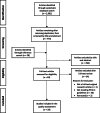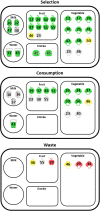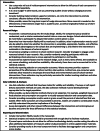A systematic review of school meal nudge interventions to improve youth food behaviors
- PMID: 32560731
- PMCID: PMC7304192
- DOI: 10.1186/s12966-020-00983-y
A systematic review of school meal nudge interventions to improve youth food behaviors
Abstract
Background: School meal programs have a large reach and thus are ideal environments in which to implement interventions targeting improved youth eating behaviors and reduced food waste. This systematic review summarizes the evidence on the effectiveness of school meal nudge interventions on influencing children's eating and waste behaviors.
Methods: Inclusion criteria required studies have participants in primary or secondary school (grades K-12) with interventions that occurred during school lunch or breakfast in the cafeteria and included at least one of the following outcomes: selection, consumption, waste, or school meal participation. Analyses of intervention outcomes were restricted to studies of strong and moderate quality.
Results: Twenty-nine studies were included in the quality assessment. Included interventions fell into three categories: 1) placement/convenience, 2) marketing/promotion, or 3) variety/portions. The 20 strong and moderate quality studies included in outcome analyses generally used strong data collection methods and study designs, but were limited by an overall lack of intervention fidelity checks. Multi-component interventions often did not use methods that allowed for separate analyses of outcomes for different intervention components.
Conclusions: School meal nudge interventions were positively associated with food selection, and had an inconsistent relationship with food consumption. There were few studies evaluating the impact of nudge interventions on meal participation or food waste. The limited evidence available links nudges to improved meal participation, as well as undesirable increases in food waste. Future research in this area should use methods that incorporate implementation metrics, attend to systems factors, and allow the outcomes of individual intervention components to be isolated.
Keywords: Behavioral economics; Food waste; Nudge; School meals.
Conflict of interest statement
The authors declare that they have no competing interests.
Figures



References
-
- U.S. Department of Health and Human Services O of DP and HP Dietary guidelines advisory committee reports. Nutr Today. 2015;50(4):177–184. doi: 10.1097/NT.0000000000000110. - DOI
-
- Gunders D. Wasted: How America is losing up to 40 percent of its food from farm to fork to landfill. NRDC Issue Pap [Internet]. 2012;(August):1–26. Available from: http://www.nrdc.org/food/files/wasted-food-IP.pdf?mkt_tok=3RkMMJWWfF9wsR...==.
-
- Thyberg KL, Tonjes DJ. Academic commons drivers of food wastage and their implications for sustainable policy development. Resour Conserv Recycl. 106;110–23.
Publication types
MeSH terms
LinkOut - more resources
Full Text Sources
Medical

